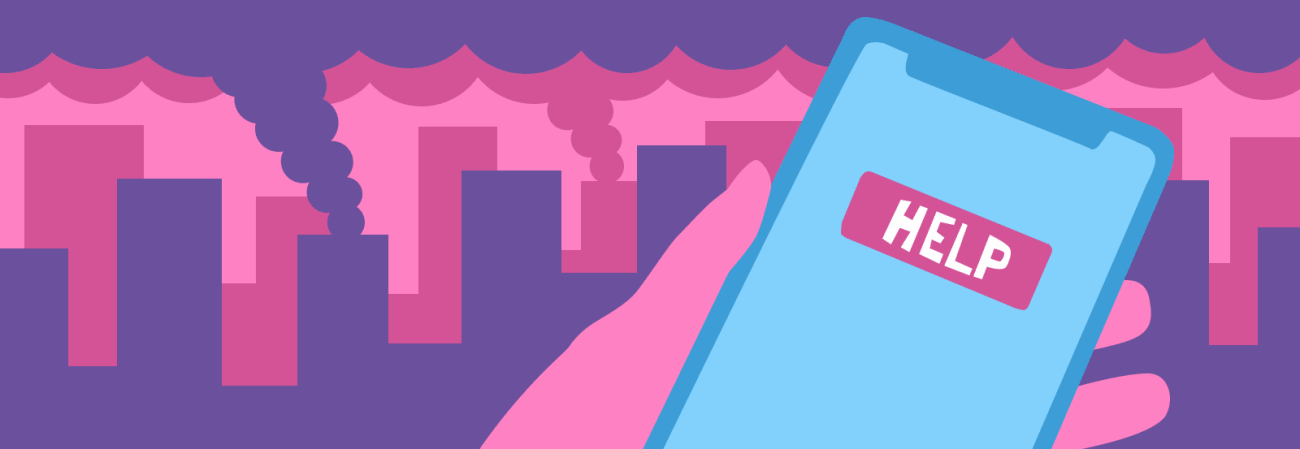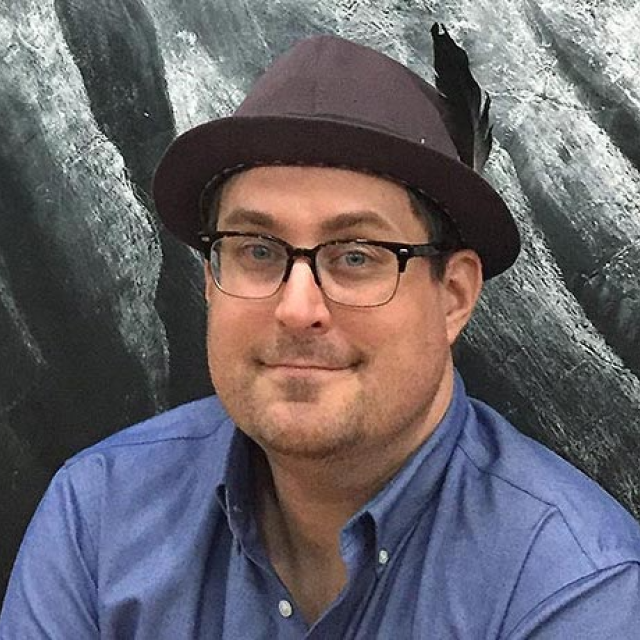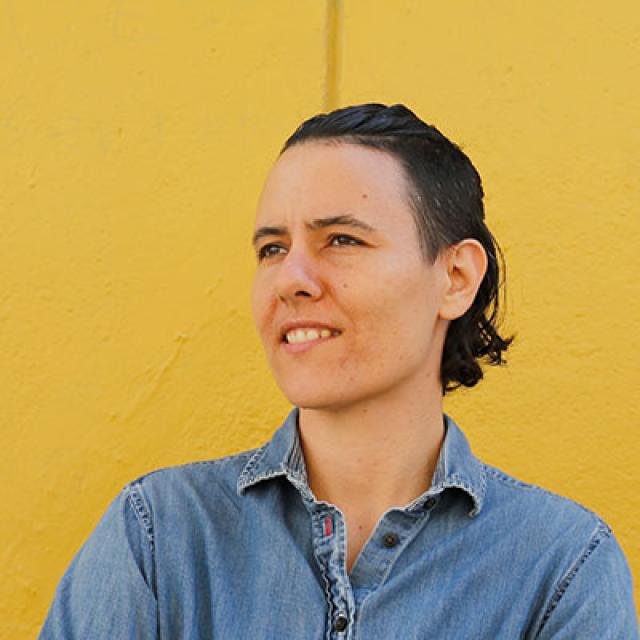Breaking Down Barriers: Highlights from #a11yTO Conf 2019
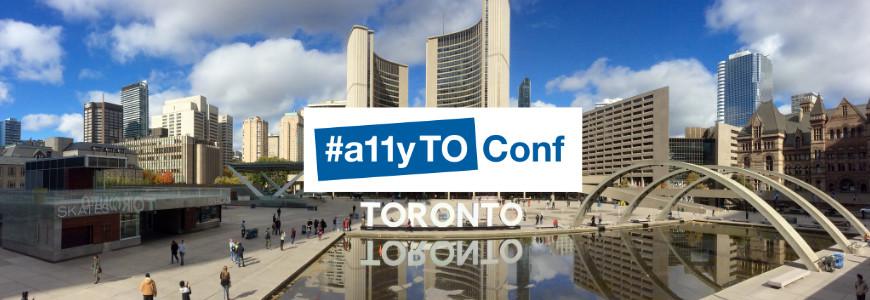
Share
Accessibility is really important to the team at Kalamuna. We strive to ensure that every website we work on is as accessible as possible, and that what we design and implement can be used, understood, and appreciated by people of all abilities. But keeping up with all the tools, techniques, and best practices, not to mention the latest WCAG guidelines, can be challenging. Fortunately, there’s a conference that takes place every year where we can do just that.
Now in its third year, the #a11yTO Conf is an amazing conference focused on digital accessibility. Born out of the Toronto #a11yTO meetup and super successful #a11yTOCamp unconference, this year’s flagship event was held at the Telus Digital offices, sandwiched between two brand new accessibility-focused events that covered the built environment (#A11yIRL) and video game development (#a11yTO Gaming), to round out what the organizers are now calling #a11yWeekTO. They also had a number of evening events for attendees and speakers to mingle and network. All this effort has truly put Toronto on the map as a world-class destination for a11y-related events and talent.
So many highlights
One of the things I like the most about the #a11yTO Conf is the 2-day, single-track format. The organizers do an amazing job of curating this event, and this format ensures audience members don’t have to worry about choosing between sessions and potentially missing out on anything, and every speaker gets to address the entire audience while they’re on stage.
I also appreciated the accommodations that the organizers provided to ensure everyone had a comfortable and enriching conference experience. Yes, they had stickers to put on your conference badge to specify preferred pronoun, a common gesture these days, but they also had some pretty novel and thoughtful touches, like an area set up to the side of the stage where attendees could ask speakers questions during the breaks. That was a great way to not only give folks a way to connect directly with speakers and ask followup questions related to their talks, but it also made it easier for speakers to time their presentations (not having to factor in space for questions that may or may not get asked) and it streamlined the entire lineup so that things ran exceptionally smoothly.
And speaking of running things smoothly, a humorous “time muppet” video would come on-screen towards the end of each break alerting the crowd as to how many minutes were left until things would start back up. And it worked beautifully! I wish all conferences did something like this.
And so many inspiring speakers!
As for the main content, with 2 solid days of programming there were many great speakers and talks. Here are a few standouts from this year’s event:
Henri Helvetica looked at recent developments in the automation of alt text for images on the web using AI and machine learning, but concluded it has a long way to go before it will be able to replace humans. This confirmed what we had determined last summer when Kalamuna and Pantheon were looking to work on a proof-of-concept project using the Google Cloud Vision API. So for now, keep writing those alt text descriptions the old fashioned way!
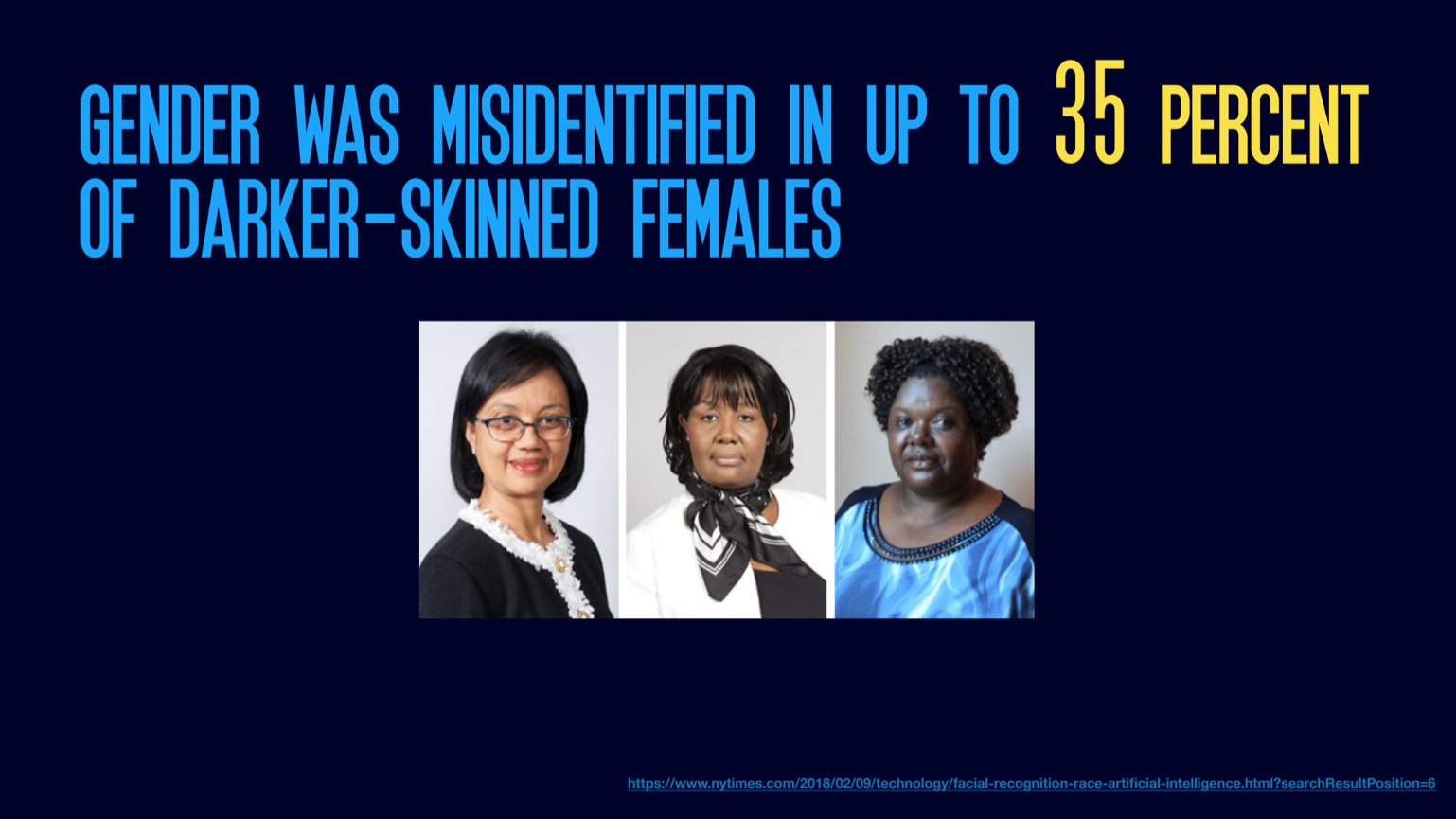
Alastair Somerville, who consulted on a project for the Postal Museum in Britain, taught us that people with disabilities don’t want VR, they want to have shared experiences with family and friends. It was a great reminder not to put technology and solutions ahead of users needs, and to always start by figuring out what users want before jumping to solutions.
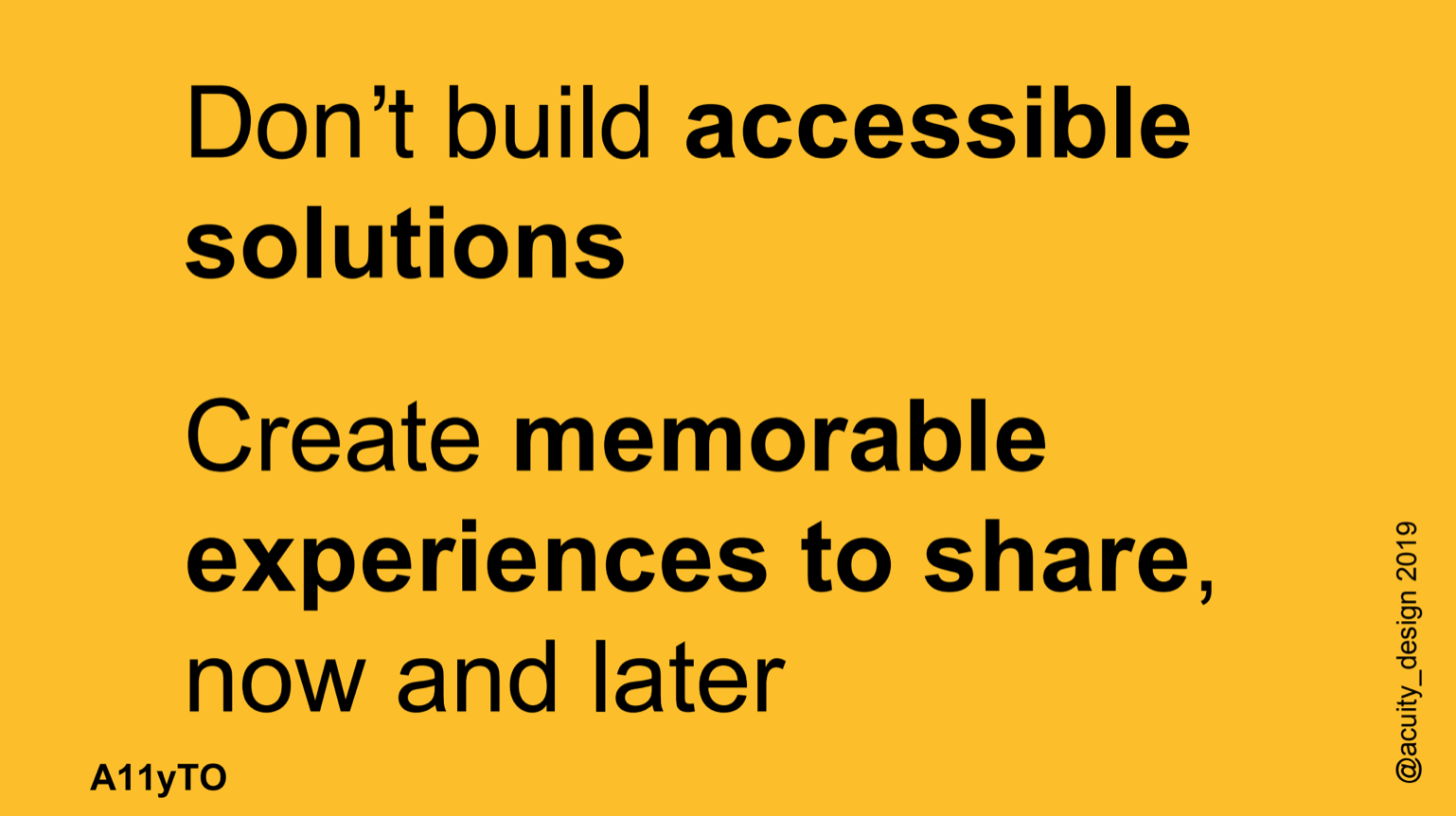
Natalie Patrice Tucker from Dropbox described the 5 stages of grief that many developers go through as she works with them to make their products more accessible. Sadly she doesn’t have “hundreds of monkeys” (her words) to help them make the problems go away.
Tatiana Mac taught us about the history of English Ivy, slave plantations, and our collective responsibility to prevent technology from causing further repression and injustice to minorities. It wasn’t as much a talk about a11y as it was about systems and system design, but it fit right in as it exposed the systemic issues that are built into modern society, and highlighted how tech as an industry is in an incredibly powerful position to either help or harm the marginalized members of society.
Mike Gifford gave us a great list of reasons why most RFPs suck, and how they can be improved to ensure they get better responses (and ultimately better and more accessible end results). This talk struck many chords with me as I often have to read through RFPs as part of bidding on projects, and they could all benefit from Mike’s advice.
Cherry Thompson shared her personal experiences as an a11y professional in the video gaming industry and how vital a11y features can be to disabled gamers. Her talk was both emotional and powerful, and beautifully illustrated her points (and her points were beautifully illustrated) that games can be a powerful enabler but we all need to welcome and embrace people with disabilities in the professional gaming community.
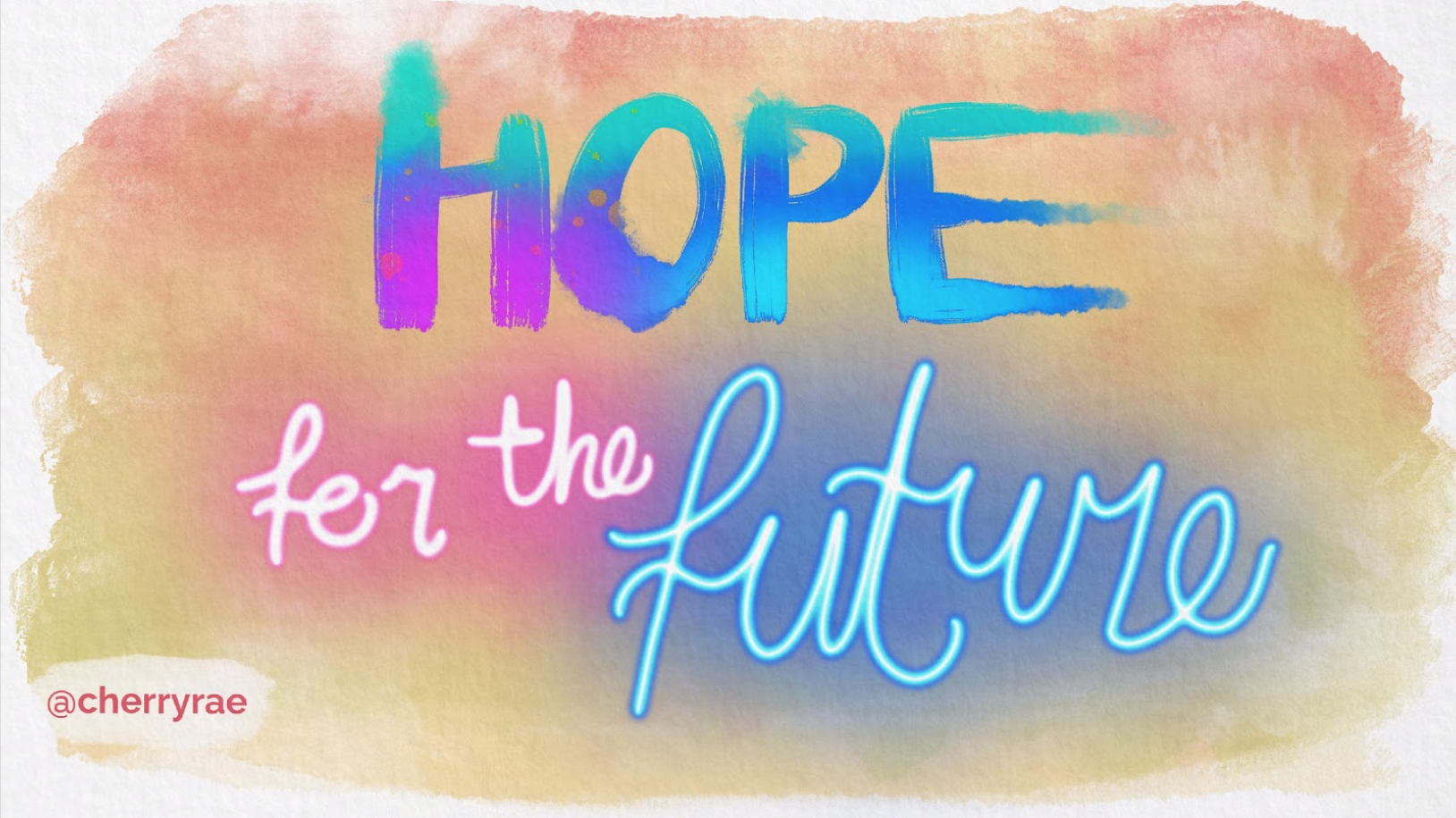
Neil Milliken provided an inspirational call-to-arms that outlined how society’s needs are changing and how governments can do more to encourage businesses to make their products and services more accessible. As he pointed out, there are ways to do it, but without government oversight and enforcement it’s not likely to happen. A potential model he proposed borrowed from tactics used to enforce emission reduction efforts, with penalties for polluters (or in this case, non-compliers) and rebates or other incentives for those who make concerted efforts. It’s a novel idea that could actually work.
Shell Little shed some light on how dark patterns on the web are particularly insidious for people with cognitive disorders. I already knew they were evil, but Shell highlighted just how much worse they are for people who count on conventional visual cues to safely and expediently navigate and use websites.
Giving thanks
I would be remiss if I didn’t call out and thank the organizers of the event and all of the volunteers who worked tirelessly to ensure the event ran smoothly. It’s not easy to put on an event of this calibre, and even harder to imagine putting on multiple events the same week! Toronto is very fortunate to have such a strong and motivated community, and the whole world is better for it. I’m already looking forward to next year’s event.



